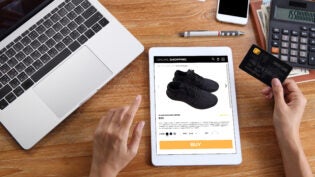
In recent years, online retail has seen a massive surge in popularity. This can be attributed to a number of factors, including the convenience and ease of online shopping, as well as the growing number of consumers who are now comfortable making purchases online.
This blog will explore the history and growth of the online retail market, as well as some of the key trends that are shaping its future. It will also take a look at how people can start their own online retail businesses.
History
The online retail market has come a long way since its inception in the early 1990s. The first online retail transaction is believed to have occurred in 1994 when a man from Pennsylvania purchased a pizza via the newly created Netscape Navigator web browser. This early example of online shopping was followed by several other milestones over the next few years. In 1994, Amazon.com was founded, and in 1995, eBay was created. These two companies would go on to become the two largest online retailers in the world.
Growth
The first thing to understand about the online retail market is its size and scope. In 2018, global e-retail sales amounted to $2.8 trillion US dollars, and this figure is expected to grow to $4.8 trillion by 2023. This represents a compound annual growth rate (CAGR) of 22.2%, which is significantly higher than the overall growth rate of retail sales, which is expected to be around 3.9% during the same time period.
Not surprisingly, most online retail sales are currently generated in North America and Europe, accounting for 58.9% and 23.1% of the total market, respectively. However, Asia-Pacific is the fastest-growing region for online retail, with a CAGR of 32.6%. This is largely due to the growing number of consumers in countries like China and India who are gaining access to the internet and adopting e-commerce rapidly.
Trends
There are a number of key trends that are driving the growth of online retail. Here are a few of the most important ones:
The continued growth of e-commerce platforms
A key driver of online retail growth is the continued expansion of e-commerce platforms like Amazon, Alibaba, and Flipkart. These platforms make it easy for consumers to find and purchase products online, and they also offer a wide range of features and services that enhance the shopping experience. For example, Amazon Prime offers free shipping on millions of items, while Alibaba’s Taobao platform provides buyers with access to a huge variety of products and sellers.
The increasing popularity of mobile commerce
Another major trend that is driving the growth of online retail is the increasing popularity of mobile commerce. As more consumers gain access to smartphones and other mobile devices, they are using them to shop online more frequently. In fact, mobile commerce sales are expected to grow from $1.8 trillion in 2019 to $3.56 trillion by 2023, representing a CAGR of 32.7%. This is largely due to the fact that mobile shopping is more convenient than desktop shopping, and it also allows consumers to make purchases anywhere, at any time.
The rise of social commerce
Social media platforms like Facebook, Instagram, and Snapchat play an increasingly important role in online retail. This is because they allow brands to connect with their target audiences and promote their products in a way that is interactive and engaging. In addition, social media platforms are also being used as e-commerce platforms, with platforms like Instagram and Snapchat offering features that allow users to make purchases directly from their posts.
The growth of omnichannel retail
Omnichannel retail is another major trend that is shaping the future of online retail. Omnichannel retailing refers to the practice of integrating online and offline channels in order to provide customers with a seamless shopping experience. This is important because it allows retailers to reach their audiences through multiple channels and provides them with a more convenient way to shop. In addition, omnichannel retailers can better track customer data and use it to improve their marketing and operations.
The increasing importance of voice commerce
Voice-activated assistants like Amazon Alexa and Google Assistant are playing an increasingly important role in the online retail space. This is because they allow consumers to shop online using just their voice, which is more convenient than traditional methods like typing on a keyboard or using a mouse. In addition, voice commerce is also growing because it is becoming more accurate and sophisticated, with voice-activated assistants becoming better at understanding natural language.
The online retail market is growing at a rapid pace, and a number of key trends are driving it. These trends include the continued growth of e-commerce platforms, the increasing popularity of mobile commerce, the rise of social commerce, the growth of omnichannel retail, and the increasing importance of voice commerce. Retailers who are able to capitalize on these trends will be well-positioned to succeed in the future.
Starting an Online Retail Business
If you’re thinking about starting an online retail business, there are a few things you need to keep in mind.
1) Choose the right platform
The first step is to choose the right e-commerce platform for your business. There are many different platforms to choose from, and each has its own set of features and benefits. If you’re not sure which platform is right for you, take some time to research the different options and consider your specific needs.
2) Find a niche
It’s also essential to find a niche for your online retail business. A niche is a specific group of people that you will target with your products or services. When choosing a niche, it’s important to consider things like the needs of your target audience, the competition, and the profitability of the niche.
3) Create a marketing plan
Once you’ve chosen a platform and a niche, you need to create a marketing plan. This will help you promote your business and attract customers. When creating a marketing plan, make sure to consider things like your target audience, your budget, and the channels you’ll use to reach your audience.
For example, if you’re planning to use social media to promote your business, you should consider which platforms your target audience is using. Are they using Instagram, Facebook, or Twitter? What kind of content are they interested in? Once you’ve answered these questions, you can start creating a plan for how you’ll use social media to reach your target audience.
4) Build a website
Your next step is to build a website for your online retail business. This is where potential customers will go to learn more about your business and what you have to offer. When building a website, make sure to:
- Use a responsive design: This means that your website will look good on all devices, from desktop computers to mobile phones.
- Use clear and concise copy: Write clear and concise copy that is easy to understand.
- Include strong calls to action: Make it easy for visitors to take the next step, whether it’s subscribing to your newsletter, making a purchase, or contacting you.
- Implement a secure payment system: If you’re going to sell products or services on your website, you need to implement a secure payment system. This will ensure that your customers’ personal and financial information is safe. Solidgate is an excellent provider of secure payment solutions and can help you set the process up.
Drive traffic to your website
Once you’ve built your website, you need to start driving traffic to it. This is where your marketing plan will come in handy. Search engine optimization (SEO) is a great way to drive traffic to your website. SEO is the process of optimizing your website for Google’s search algorithm. This means including keywords in your website copy and making sure your website is easy to navigate.
You can also use paid advertising to drive traffic to your website. Google AdWords and Facebook Ads are two popular options. With paid advertising, you can target specific demographics, interests, and even locations.
Convert visitors into customers
Once you’ve started driving traffic to your website, you need to convert those visitors into customers. This is where having a strong call to action comes in handy. Make it easy for visitors to take the next step, whether it’s subscribing to your newsletter, making a purchase, or contacting you.
You can also use retargeting to convert visitors into customers. Retargeting is a form of online advertising that allows you to show ads to people who have already visited your website. This is a great way to remind potential customers about your business and encourage them to make a purchase.
Analyze your results
Finally, it’s crucial to analyze your results regularly. This will help you see what’s working and what’s not. Google Analytics is an excellent tool for tracking your website traffic and analyzing your results.
Online retail is a rapidly growing industry with a lot of potential. By following these steps, you can start your own online retail business and tap into this growing market.
1818 Views














